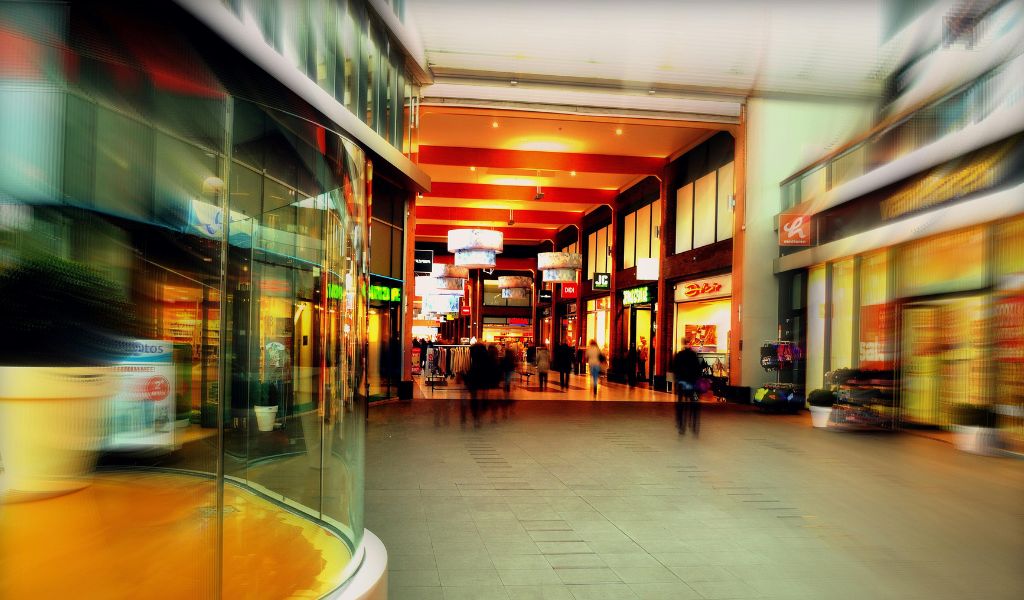Retail Dead Zones: Understanding and Overcoming Low-Traffic Areas

Every retail space is designed with intent, yet many stores face underperforming areas.
Buyers often overlook these low-traffic zones. However, the low-traffic zones can quietly undermine overall sales performance and customer experience.
While some areas of a store naturally attract attention, others require thoughtful strategies to draw shoppers in and make the most of every square foot.
A retail dead zone often creates problems for the stores. Moreover, the stores incur massive losses when selling certain products.
Retail dead zones usually lead to numerous issues. The shops end up piling up loads of dead stock.
Thus, shops and companies try to highlight areas where they have detected potential dead zones.
Moreover, a survey suggests that people still prefer visiting physical stores, despite the rise of e-commerce and quick commerce platforms online. Moreover, the survey was done by Statista in 2022.
However, the survey was done during the COVID period. But the survey reflects the fact that people missed shopping offline during that time.
People, moreover, prefer the feel of walking into a store, rather than being guided by someone.
Consumers prefer to be in control of their purchases, rather than being controlled by algorithms.
However, well-designed stores often use psychological techniques to guide consumers to the right place.
Thus, the consumers find the buying process to be seamless.
Why Dead Zones Exist
Dead zones often form due to poor layout design, limited visibility, or limited accessibility.
Corners that feel isolated, aisles that end abruptly, or spaces hidden behind structural elements equally affect the customer navigation.
Elements like lights and the surrounding ambiance also affect the customer experience.
Shoppers are drawn to areas that feel open, bright, and welcoming, and may unconsciously avoid spaces that lack those qualities.
Thus, shops often struggle to highlight those spaces properly. Moreover, people cannot expect every corner of their shop to look the same.
However, proper guidance and highlighting the dead corners can lead the customers to the right space.
1. The Impact On The Customer Journey
Moreover, the customers often overlook certain sections of a store.
Thus, this leads to the missed selling opportunities. Moreover, at times, damages go beyond missed selling opportunities.
The overall flow of the shopping journey can feel fragmented, making it harder to create a cohesive brand experience.
Customers should be able to navigate the store seamlessly. Moreover, this affects the buying experience.
Easy navigation allows customers to discover products.
Furthermore, the customers feel engaged and spend more time exploring.
Dead zones disrupt that momentum, leading to lower engagement and fewer opportunities for connection.
Customers should be able to navigate the store to find the right product for themselves.
Moreover, customers often find it difficult even to get access to highly in-demand products. Thus, they end up overlooking the product.
2. Strategies For Activation
Reclaiming low-traffic areas starts with understanding how shoppers interact with the space.
Smart display solutions can create focal points that capture attention, while interactive or digital elements bring an energy that static signage cannot match.
Incorporating sensory elements, such as dynamic lighting or subtle background visuals, can shift the perception of these areas from overlooked to inviting.
Flexibility plays the role of another important element.
Moreover, retailers often rotate displays and introduce seasonal features. They also refresh product arrangements to ensure that no area remains hidden.
When shoppers sense variety and novelty, they are more inclined to explore. Small changes, like repositioning complementary products together, can transform a quiet corner into a destination.
Certain products become high in demand at certain times of the year. Thus, the shop owners should shuffle the right products based on their needs. Therefore, users find the right product at the right time of year.
Elements like signboards and other signage can also guide people to shelves and products that are out of sight.
Thus, shop owners should also find ways to improve visibility through signboards and other measures.
The businesses should also try to place the entry and the exit of the shops properly. When consumers have to follow a particular path, they have to pass through certain sections.
Thus, consumers often find the right product of their interest in such places.
3. The Role Of Technology
Technology provides new opportunities to address dead zones with precision. Heat mapping, digital signage, and adaptive display systems allow retailers to monitor traffic patterns in real time and respond quickly.
Businesses should not rely on assumptions. Moreover, companies should make data-informed decisions.
They should align the position promotions, staff, or interactive displays.
These insights enable continuous optimization, ensuring that every area of the store contributes to both sales and the customer experience.
Retail success comes from more than just great products; it depends on creating an environment that invites discovery at every turn.
By transforming overlooked areas into points of engagement, retailers can unlock untapped potential and deliver a more complete, rewarding experience for their customers.
Explore the resource that accompanies this article for additional insights into addressing retail dead zones.
Proper maps on the entrance of the shop often allow people to seamlessly navigate through the entire floor without fumbling around.
Proper human assistance also helps put the customers at ease. The employees of the store should be cooperative with the customers.
Things To Remember About Retail Design Strategy
Retail design strategy often depends on the store’s layout. Moreover, there can not be any generalised retail design strategy.
However, proper strategies should be applied to different types of stores in other parts of the world.
Human assistance often helps people return to a particular store. Thus, this leads to customer retention.
The businesses should incorporate the basics of retail. The shop owners should do proper market research. Furthermore, businesses should determine the product’s value proposition.
Moreover, shops should display products accordingly while deciding which products to offer to the consumers.
Based on the abovementioned elements, the businesses should develop a relevant pricing strategy. Marketing plays the most crucial role. Moreover, the businesses should market the appropriate product along with the store at the right time of the year.
For example. During the winter, businesses should market winter wear like woolen warm clothes and others. However, people generally seek cotton clothes during the summer.










